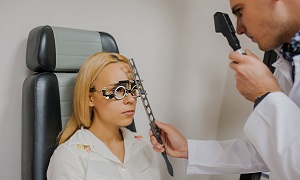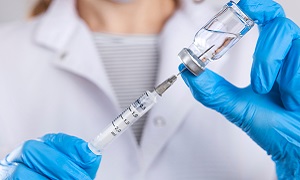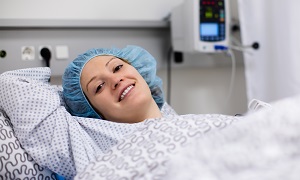Best Doctors in India for Blepharoplasty
Best Hospitals in India for Blepharoplasty
- City: Bengaluru, India
Hospital Highlights:
- Fortis Hospital Bannerghatta, Bengaluru was established in 2006.
- The hospital is a 276 bedded multi-specialty tertiary care facility.
- The hospital specializes in cutting-edge medical technology and dedicated patient care services.
- The hospital is equipped with state-of-the-art technologies like trans-radial angioplasty, trans-abdominal cardiac surgery, and computerized TKR navigation surgery.
- The hospital provides specialty medical services in cardiology, cardiac surgery, orthopedics, neurology, neuro-surgery, GI, and Minimal Access Surgery (MAS).
- City: Chennai, India
Hospital Highlights:
- Fortis Malar was established in 1992 and was formerly known as Malar Hospital.
- The hospital specializes in cutting-edge medical technology and dedicated patient care services.
- The hospital is multi-specialty, tertiary care facility with 180 beds.
- The hospital offers comprehensive medical care in specialties such as cardiology, cardio-thoracic surgery, neurology, neurosurgery, orthopedics, nephrology, gynecology, gastroenterology, urology, pediatrics, and diabetes.
- City: New Delhi, India
Hospital Highlights:
- Established in 1996, Pushpawati Singhania Research Institute is one of the top hospitals in the NCR region, as well as one of the top facilities in India for gastroenterology. The hospital is one of South Asia’s first institutes in medical and surgical treatment for diseases related to digestion.
- The hospital is equipped with state-of-the art facilities coupled with the latest equipment as well as renowned consultants from various parts of India as well as other parts of the world.
- City: New Delhi, India
Hospital Highlights:
- State-of-the-art technology and devoted healthcare professionals have been brought together under one roof at Venkateshwar Hospital to provide genuine medical care. The hospital’s professionals work together as a team to deliver the best possible treatment to their patients, using the most sophisticated equipment and information technology.
- Venkateshwar Hospital’s mission is to attain global excellence in healthcare by employing evidence-based, ethical clinical practices and cutting-edge technology by a team of highly skilled experts.
- City: New Delhi, India
Hospital Highlights:
- Sir Ganga Ram Hospital, New Delhi is known to provide the latest medical procedures with the latest technology in all of its units.
- The hospital has a team of reputed doctors, nurses, and healthcare professionals that ensure that patients receive quality care at affordable costs.
- Staffed with a team of highly qualified doctors, dedicated nurses, and paramedical and non-medical staff, the hospital aims to lead in healthcare delivery, medical education, training, and research.
- As per the vision of the founder, the hospital also provides free treatment to the economically weaker sections of society.
- Sir Ganga Ram Hospital also provides training to young doctors under the Diplomate in National Board(DNB) program. The DNB program at the hospital was started in 1984 and it is known for currently running the maximum number of DNB specialties in the country. It also has the distinction of having the first bone bank in India.
- City: Kerala, India
Hospital Highlights:
- Established in 2019, Apollo Adlux Hospital is the first Apollo Hospital in Kerala and the 73rd hospital owned by Apollo Group in India. With the state’s most advanced, comprehensive healthcare infrastructure and cutting-edge technologies, Apollo Adlux Hospital stands as an example of medical excellence in Kerala.
- With over 34 multi-specialty departments, the hospital believes in providing the best quality treatment to its patients at affordable rates, ensuring comfort at their difficult times.
- The 300-bed hospital is managed by a team of highly qualified and experienced experts who delivers exceptional hospitality to their patients and treats them with great compassion.
- With its affiliation with the Apollo Hospitals Group, the hospital aims in providing patients with top-notch healthcare services while also serving communities in Kerala.
- The hospital has good railway and road connections, and is conveniently close to Cochin International Airport.
- City: Gurugram, India
Hospital Highlights:
- Situated near DLF Cyber City, Gurugram, Narayana Superspecialty Hospital is one of the top medical facilities in the Delhi NCR region, catering to the needs of the people. Known for its commitment to quality medical care and patient service, the hospital is a state-of-the-art facility with planned and well-equipped sections, which includes a spacious OPD area as well as comfortable patient rooms.
- It is the closest super-specialty hospital from Indira Gandhi International Airport towards Gurugram, and also the nearest super specialty hospital from DLF Cyber City. It is also close to major residential areas in Gurugram.
- It is part of the renowned Narayana Health Group. Established in 2000, by Dr. Devi Shetty, a renowned cardiac surgeon, it has grown to be one fo India’s leading healthcare groups.
- City: Noida, India
Hospital Highlights:
- Fortis Hospital, Noida, stands as one of the oldest and most trusted healthcare institutions in the region, setting a benchmark for comprehensive medical care.
- As the second mega hub hospital in the Fortis Healthcare Group, Fortis Hospital, Noida, upholds a legacy of trust among more than 1.2 million patients. By integrating top-tier professionals with cutting-edge technology, the hospital delivers superior treatment across various medical disciplines.
- Specializing in advanced Neurosciences, Orthopedics, Kidney and Liver Transplant Programmes, Fortis Hospital, Noida has successfully performed over 1,500 transplants, solidifying its reputation as a leader in specialized medical interventions.
BLEPHAROPLASTY
Blepharoplasty is a procedure for treating droopy eyelids. It is a type of plastic surgery, where your doctor removes skin, muscle and sometimes fat that may be causing sagging in the area around your eyes.
As we age, our eyelids stretch and the muscles supporting them also become weak. Due to this, excess fat can gather above or below the eyelids, which leads to sagging eyebrows, droopy upper lids as well as bags under the eyes.
Sagging skin around your eyes not only makes you look older but also reduces your peripheral vision. Blepharoplasty is a procedure that can eliminate these kinds of vision problems and they help in making your eyes appear younger and also more alert.
Purpose
This procedure is usually sought by people who are seeking anti-aging treatments. Though sagging of the skin around the eyes is a natural part of aging, some people might find this bothersome, which is why they might opt for this surgery. People who have significant bags under the eyes or people whose eyebrows start to sag might also consider Blepharoplasty.
Although many people prefer this surgery for cosmetic reasons, there are others who choose to go for the surgery if their vision is affected by the sagging skin. Some people can also find their vision blocked by the hanging skin when they look upward.
Preparation
- Your medical history: Your surgeon will ask about any previous surgeries as well as your past or current conditions, such as dry eyes, glaucoma, circulatory problems, allergies, thyroid problems and diabetes. If you are taking any kind of medications, herbal supplements, vitamins, alcohol, tobacco or drugs you need to inform your doctor.
- Your expectations: You will need to discuss your expectations honestly as it will help you with a satisfactory outcome. Your surgeon will also discuss how likely the procedure is to work well for you.
Before the surgery, you’ll need to undergo:
- A physical examination: A physical examination will be conducted by your surgeon. This might include testing your tear production and measuring parts of your eyelids as well.
- A vision examination: Your eye doctor will be examining your eyes and test your vision including your peripheral vision. This helps in supporting any insurance claim.
- Eyelid photography: Your eyes will be photographed from various angles. These photos will help in planning the surgery and to assess its immediate and long-term effects as well as supporting an insurance claim.
Your doctor will ask you to stop taking any medications before your surgery unless he/she approves them.
You will also need to quit smoking a few weeks before the surgery. Smoking affects your healing after surgery.
If you are having outpatient surgery, it is best if you are able to arrange someone to drive you to and from the surgery. You will need to plan to have someone stay with you the first night after you return home from the surgery.
Procedure
Blepharoplasty is usually done on an outpatient basis. Your surgeon will first inject a numbing medication into your eyelids and then administer intravenous medication to make you relax.
If the surgery is being performed on the upper and lower eyelids, the surgeon will generally work on your upper lids first. He/she can cut along the fold of the eyelid, remove some of the excess skin, muscle and possibly fat and then close the cut.
After this, your surgeon will perform on the lower lid. He/she will make a cut just below the lashes in your eye’s natural crease or inside the lower lid. He/she will remove or redistribute excess fat, muscle, sagging skin and then close the cut.
Recovery
Compared to other surgeries, recovery from Blepharoplasty usually takes a shorter time. After the procedure, you will be moved to a recovery room, where you’ll be monitored for side effects. You will be able to go home the same day unless there are any complications.
Following the surgery, it is best to take rest for a few days. You might also go through some pain. Your doctor can recommend a few medications to help you relieve any symptoms. It might take a week or two for these symptoms to disappear completely. For the next couple of days, your surgeon might recommend ice packs.
Sometimes, there might be short-term side effects such as blurry vision and sensitivity to light. If these symptoms last longer than two days, then you need to call your doctor.
Following the surgery, you will not be able to wear contact lenses, so make sure you have an alternative.
Although you won’t need to keep the eyes covered throughout the entire recovery phase, you might receive some gauge to help protect the area. Make sure that you wash the area gently and also keep it clean. After some days, you will need to see the surgeon again for an evaluation and remove any stitches as required.
Risks
The surgery carries the risk of bleeding, bruising and infection. Although rare, Blood clots can be a serious risk.
Other risks and complications include:
- blurry vision
- scars
- damage from excessive sun exposure
- itchiness around the eye area
- dry eyes
- muscle damage
- inability to close your eyes
It is best to discuss with your doctor about these risks before the procedure. Also inform your surgeon if you have had any complications before with any previous surgery in the past.












